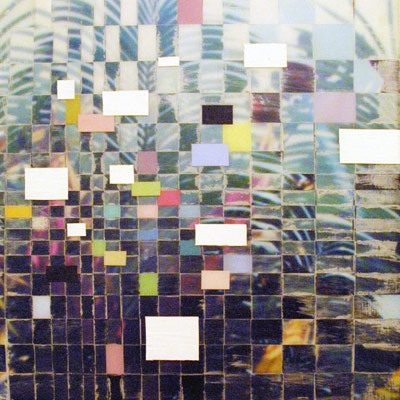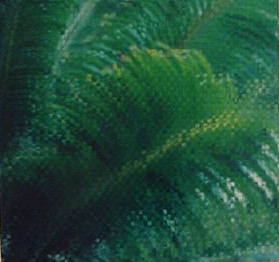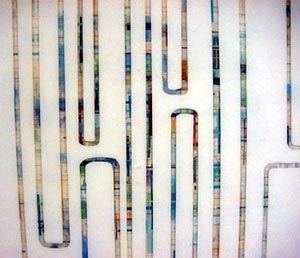Feature: Reviews
Leo Bersamina
- Gallery Paule Anglim
- December 4 — January 4, 2003
I grew up around surf culture in the ‘70s, courtesy of my brother, a serious surfer in Florida. I learned the inventive vocabulary of his crew, how to look at breaks and watched the sun rise on early morning glass. Surfing consists of a global network of highly localized and evolved vernacular cultures, each with its own history and dialect, like my brother’s crew. Before its association with the web, popular films in the 60’s brought the lifestyle and lingo of surfing (and the fluidity of the act itself) to waves of novices, who invaded beaches where locals once ruled.
Surfing has continued to capture the popular imagination, but its cultural influence reaches far beyond. French post-structuralist philosopher Gilles Deleuze dubbed surfing the central metaphor for navigating life in the 21st century. Surfing and surf culture have also been the subject of numerous art exhibitions, some of them containing excellent analyses of the art/surfing hybrid. Artists who use popular culture references as a point of departure for their artwork always risk being permanently pidgeonholed as producers of something akin to lowbrow kitsch and “surf art” is no exception. Some artists though, like Leo Bersamina, build in enough layers so that the works resonate beyond those limits. A second generation surfer, Bersamina weaves photo and video documentation of his surf junkets into abstracted works that simultaneously reference painterly notions like the grid, digital ones like pixels and circuits, and quotidian ones like surfboard construction, sand, waves and water.
In works like hide, observe, capture (2002) and Camouflage (2002) Bersamina cuts into strips and weaves large format photographs of waves, water, surfer and sky. Works in this series are sometimes composed of more than one image, becoming further abstracted. Weaving the photographic strips creates a grid that breaks apart the solidity of representation and transforms particularized imagery into meta-reality, or simply notion. The grid-like form also recalls digitization, while the weaving hearkens back to ancient fabrication technology. This blend of the visual vocabularies of craft and technology create an intriguing tension between ancient past and cyber future.
In Sampler 1 (2002) Bersamina applies thin strips of color (remnants of cut-up photographs?) to canvas, coats them with Polyeurathane then sands them, employing materials and techniques used to fabricate surfboards. The color strips form abstract, circuit-like patterns on white backgrounds. The slivers of color act as conduits, passageways or channels of visual information through which the eye flows. Sanding obscures rather than reveals, and the thick, waxy coating create a sensuous surface and visual depth. Here, Bersamina draws on a tradition of artists working with the materials of surfing and imbues it with a fresh, conceptual edge.
In addition to “paintings”, Bersamina creates sculptural works and DVDs. In Trouble in Paradise(2002), horizon lines of city and surf morph in vertical pans of the camera. Waves peel and tube, then become urban streets and rows of warehouses. In Untitled (Jungle) (2002) tiny clusters of plastic palm trees take root on the vertical face of a corner wall, as though each tiny tree was hanging ten on the vertical face of a wave. Bersamina suceeds most where he creates these resonances between the work’s form, its conceptual edge, the act of surfing itself, and its cultural milieu, to create something greater than their sum.



